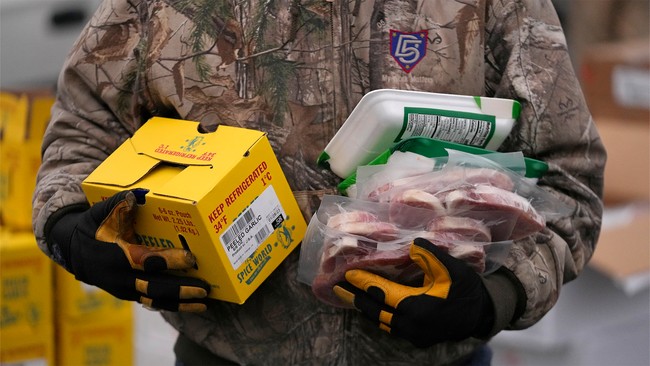


Once in a while, someone in government has a sudden rush of brains to the head and gets something right.
Government nutritional assistance comes in several forms, but the most commonly known and discussed one is the Supplemental Nutrition Assistance Program (SNAP), previously known as food stamps. That's a program with a lot of issues, not least of which that recipients have historically been allowed to purchase chips, sugar sodas, candy, and other junk with their taxpayer-funded benefits. But there are other programs, food banks, community pantries, and so forth; these programs distribute foodstuffs directly to consumers, which seems the smarter way around.
On Monday, we learned that the United States Department of Agriculture, which also oversees the SNAP program, will be purchasing $230 million in foods directly from American farmers, to be distributed to just such food bank and pantry programs. That's a good idea, no matter how you slice it.
The U.S. Department of Agriculture plans to purchase $230 million of food from American farmers to distribute to food and nutritional assistance programs across the country.
“USDA is proud to play a role in not only connecting smaller, local farmers to families, but doing its part to Make America Healthy Again,” said USDA Secretary Brooke Rollins.
The Agriculture Act of 1935 gives the secretary of agriculture broad authority to increase the consumption of domestic agricultural products. Rollins cited the act as her authority to make the $230 million purchase.
Here's some of what will be purchased and distributed:
The USDA will spend $100 million on Alaska pollock, a fish native to Alaska; $25 million on dried cranberries; $50 million on dry beans; $20 million on farm-raised catfish; and $35 million on apples.
“This is yet another action by President Trump to improve the livelihoods of the American people,” Rollins said. “The Trump Administration has delivered historic tax cuts in the One Big Beautiful Bill, boosted the farm safety net, and is ensuring American agriculture will be strong, secure, and resilient for generations to come,” Rollins said.
In the last fiscal year, the USDA said it purchased more than $924 million to distribute to the charitable food network – a coalition of food banks, food pantries and meal programs across the country.
Good. Few, if any, Americans have any objection to feeding hungry people, but as long as we taxpayers are picking up the tab, we should expect to have some say in what we're buying. No junk foods, no prepared foods, no candy or pop. And, no, I don't buy the old (stupid) argument that goes "we can't tell people what they can and can't eat." Well, if we're paying for it, we can, and should.
Read More: USDA Announces Plan to Secure America's Vital Farmlands
Seems Like a Good Idea - Department of Agriculture Moving Closer to Agriculture
This is how all of these programs should work. This is how SNAP should work. Recipients should get a voucher that's only good for certain commodities: Lean ground meats, dried beans, potatoes, tomatoes, rice, some inexpensive block cheeses - the federal government, in fact, has millions of pounds of cheese stored in caves in Missouri. Yes, really. Open up those government cheese vaults and start passing those blocks out. That's a win-win, as we already paid for the cheese.
Nutrition assistance should be just that - nutritious. If people want to eat junk, they can pay for it themselves. The whole community food bank/pantry is an idea that should be scaled up - to replace, not to supplement, the SNAP program.
Editor’s Note: Do you enjoy RedState’s conservative reporting that takes on the radical left and woke media? Support our work so that we can continue to bring you the truth.
Join RedState VIP and use the promo code FIGHT to get 60% off your VIP membership!
